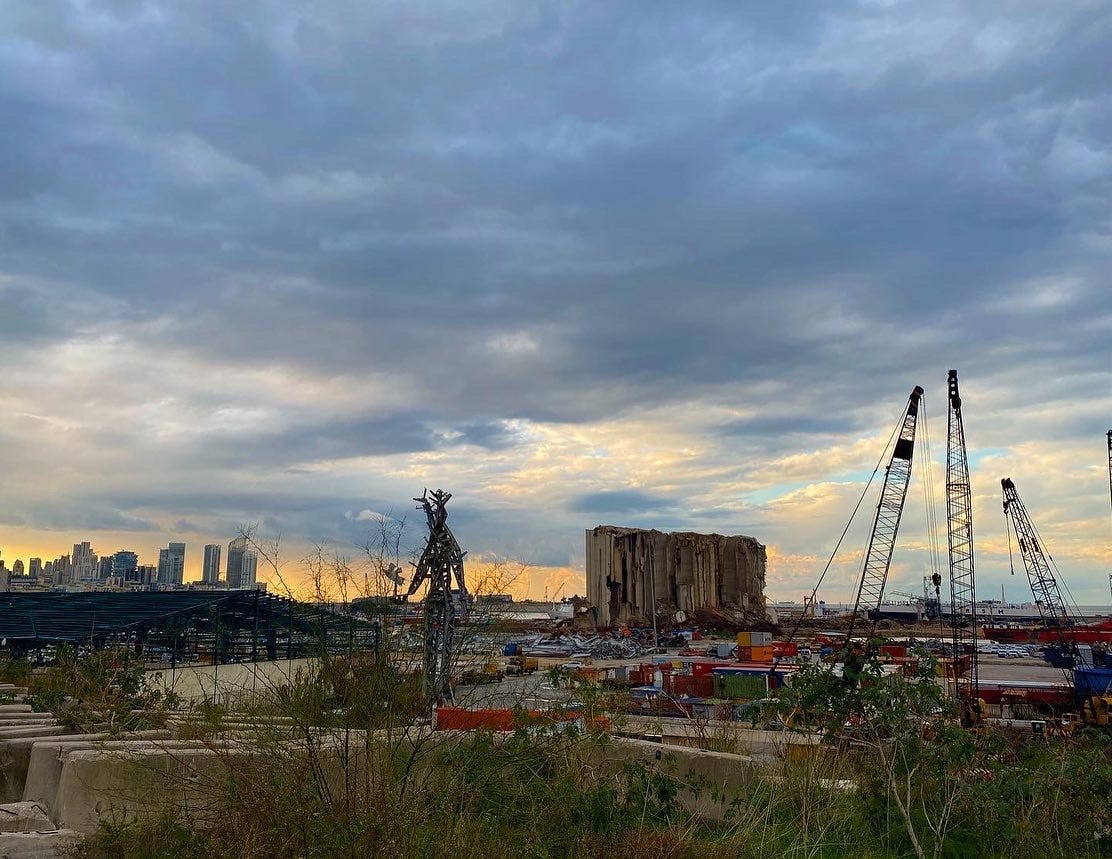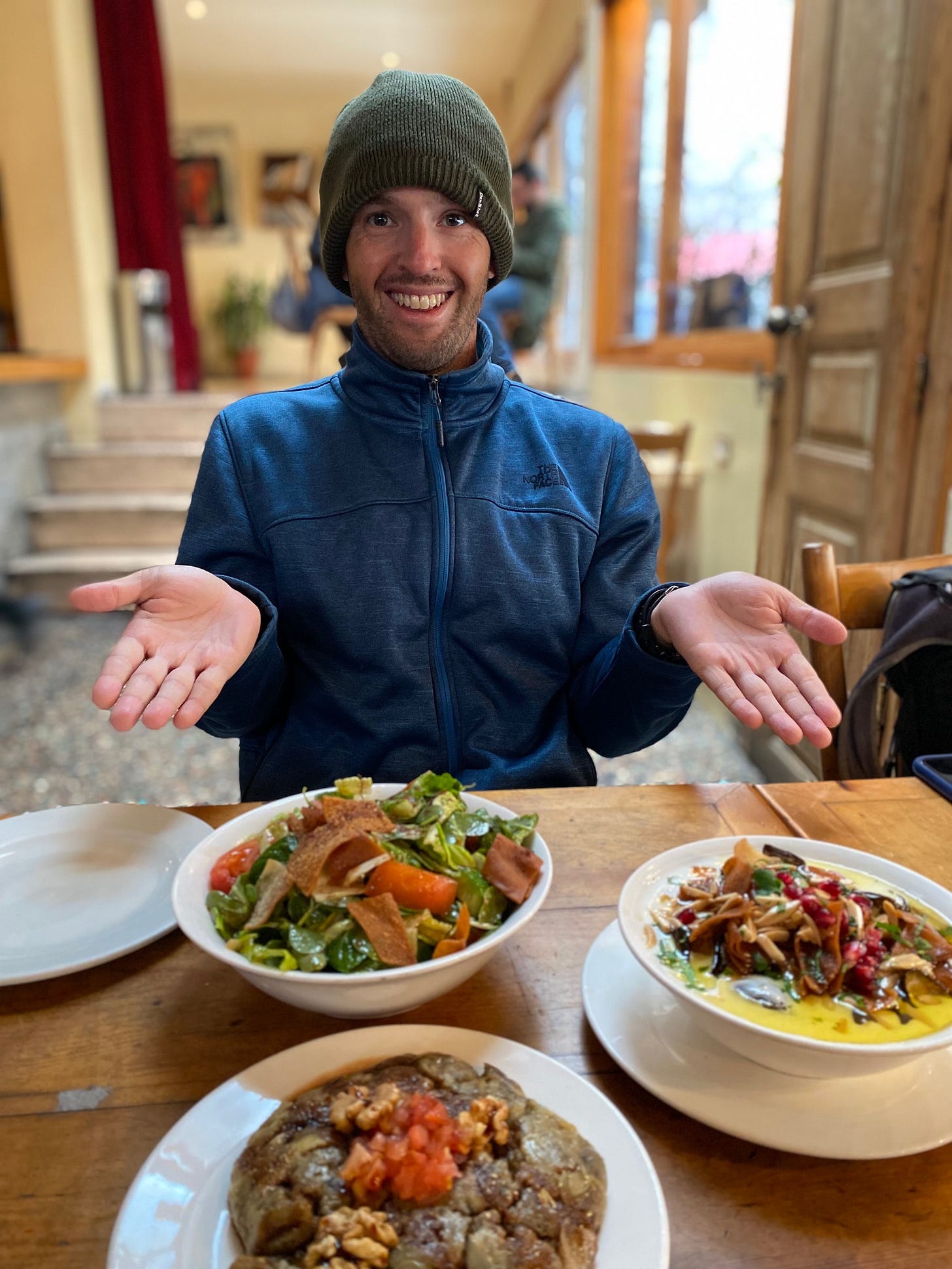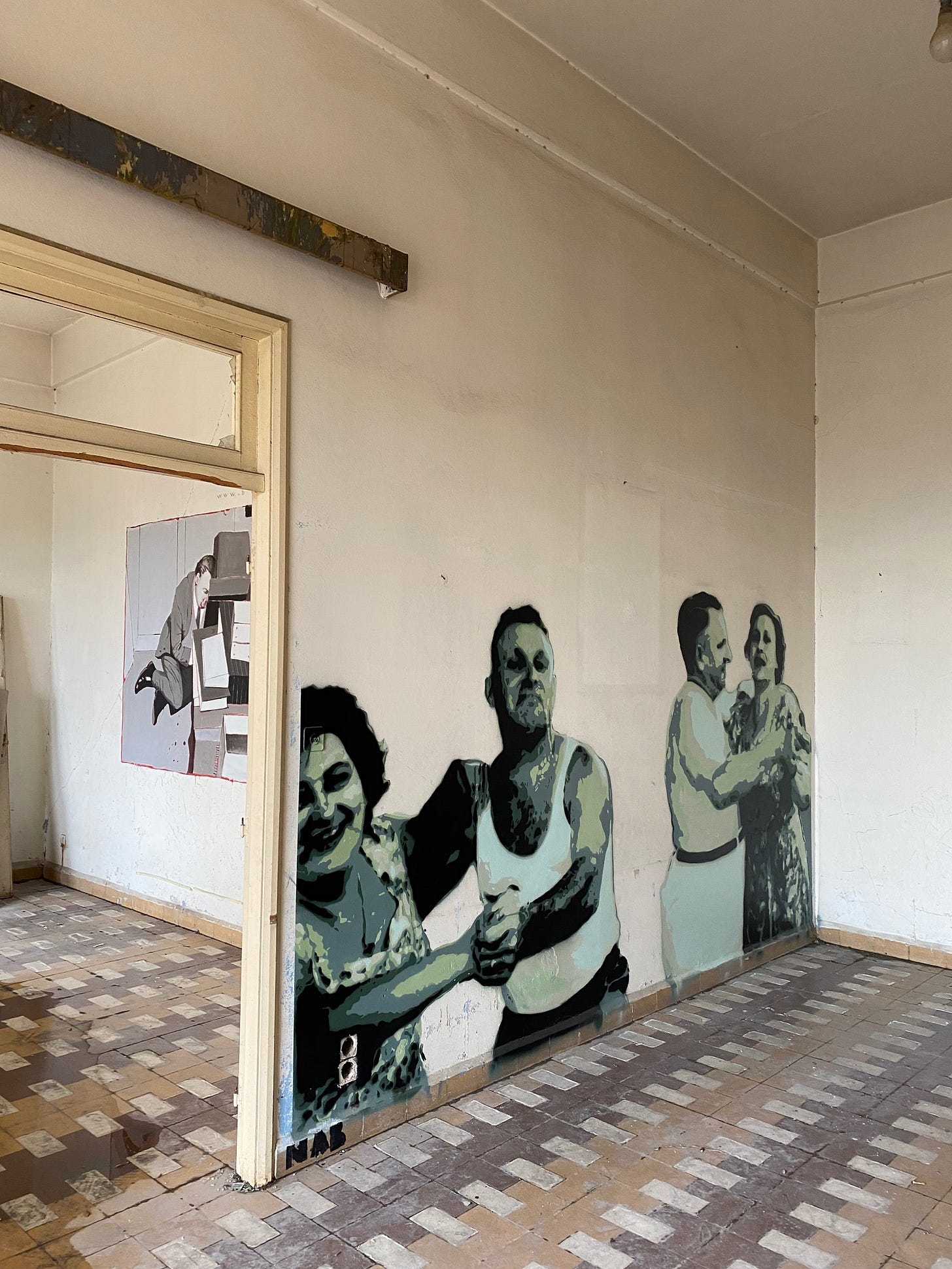After almost 4 months in South Asia, it’s time for another region! The Middle East wasn’t part of our winter 2022 travel plans, but with rapidly shifting COVID regulations and flights getting canceled right and left, it seemed to be our best bet.
We woke up one morning on a Maldivian island, hopped on a boat, and ended that day in an absolutely freezing hotel in Beirut. Wild!
Lebanon is a beautiful little country that just cannot get a break. The economic crisis (2019), which was followed by mass protests (October 2019), followed by COVID (March 2020), followed by a horrific accidental port explosion (August 2020), has become what the World Bank is calling one of the top-3 worst economic and financial crises since the 1850s. Not to mention the civil war from 1975-1990, ongoing conflict with Israel, renewed sectarian violence in Tripoli from 2008-2015, and the largest number of refugees per capita (there are an estimated one million Syrian refugees in Lebanon, while the country’s population is 6.8 million). Lebanon today has been called by many a “failed state.” Inflation is out of control, the government ceased to provide electricity in late 2021, and we were advised to bring any medicine we needed because you can’t get it here. More than 80% of people in Lebanon are now living below the poverty line, and there is no end in sight.
I’m certainly not here for disaster tourism—Lebanon is a worthwhile destination on its own merits—but I also don’t want to ignore or gloss over the very real problems affecting the people we meet. The crisis shapes everyone’s day to day (a friend explained that all Lebanese are now by necessity electrical engineers, international currency experts, and disaster management specialists). It shapes our day to day too, albeit in much more trivial ways. Figuring out how to exchange currency at a respectable black market rate was a critical project, the shower is only hot for about 10 minutes in the evenings, power is unpredictable (it goes out often, but just for a few minutes before another generator kicks in), and taxis are much more expensive than normal because of outrageous gas prices, but thanks to the exchange rate, our dollars are going way further than they normally would.
But we’re still having a nice time! Beirut is famous as a party city, and though the bars and restaurants are not crowded, the cocktails are still excellent. We’ve been re-upping our vegetable consumption (you know what they don’t have in Maldives? Any vegetables), tasting the street food (manoushe FTW), and walking a million miles per day along the Mediterranean (on the Corniche) and through the neighborhoods.
Beirut is also an art city. We met a couple friends for coffee, and they took us to a “squat” museum, which is a ruined old Beirut mansion that’s been reclaimed by artists and covered in murals (I know I know I’m so hip it hurts). One of those friends is one of the artists! How cool is his stencil piece, “Silent rave” (below)?
Mollie Explains Currency
What does “currency crisis” actually mean? Buckle up team, here we go! (Take this all with a whole shaker of salt—I’m certainly no currency expert, just an avid Googler.)
Thanks to the crisis, the real value of the Lebanese pound (commonly called “lira”) has decreased from 1,500 to the dollar in early 2019 to today’s rate of 20,800 to the dollar (a couple days ago it was ~23,000, that’s how fast it fluctuates). This is hyperinflation. As the value of the currency goes down, prices go up to compensate, which further decreases the value of the currency, etc. etc. etc. (at restaurants they’ll tell you that the prices on the menu are wrong because they can’t keep up with printing new menus). The Lebanese government, however, maintains the official rate of 1,507 lira = 1 USD, so if you take money out of an ATM or pay with a credit card, that’s the rate you’ll get. But prices reflect the black market rate, not the official rate.
So, for example, if we arrived in Lebanon and took money out of an ATM (how we normally get money when we arrive in a country), the bank would take, say, $100 out of our American account, and give us what amounts to $7.20 in Lebanese currency. Damn. To circumvent this, you arrive in Lebanon bringing cash in USD. (We took out $600 worth of Maldivian rufiya in Rasdhoo and changed it back to USD before leaving the country. We lost like $80 in the exchange uggghhh but that was our only option.) Anyhow, you can then either pay for things with USD (our hotel bill is in dollars and you can pay in most restaurants in dollars, though you’ll be at the mercy of whatever exchange rate the server wants to give you), or preferably exchange those dollars at the black market rate for lira and then pay in lira.
I’ve explained this from the traveler perspective. An inconvenience, but that’s all. For locals it’s obviously much worse—imagine your life savings sitting in your bank account all of a sudden losing >90% of its value, or your salary being paid in a fast-changing currency, or your landlord demanding you pay rent in a currency you don’t have and can’t buy because it’s unaffordable. Money is a social construct, but its impacts are very real.










wow that is crazy